The Future of Project Success Lies in Predictive Resource Modeling
In an era where projects grow increasingly complex and resource constraints tighten, leveraging predictive modeling powered by resource data has emerged as a game-changer for project management. By integrating advanced analytics, machine learning, and comprehensive resource planning, organizations can anticipate challenges, optimize resource allocation, and elevate project outcomes. This article explores how predictive modeling reshapes resource management to drive efficiency and reduce risks throughout the project lifecycle.
Understanding Predictive Modeling in Project Management
What is predictive modeling in the context of project management?
Predictive modeling in project management involves using data analytics and machine learning techniques to analyze both historical and real-time project data. This process enables forecasting of resource demand, identification of potential risks, and prediction of project outcomes. By leveraging these insights, project managers can make proactive decisions, improving the likelihood of successful project delivery.
How does predictive analytics enhance project planning?
Predictive analytics improves project planning by revealing trends and potential obstacles through analysis of past and real-time data. This allows project managers to anticipate issues before they become critical and adjust plans accordingly. For example, forecasting resource needs throughout the project lifecycle helps allocate personnel, budget, and materials more efficiently, minimizing waste and scheduling conflicts.
Why is data-driven decision-making important?
Data-driven decision-making is the foundation of predictive modeling, ensuring that project choices are based on objective insights rather than intuition alone. By continuously collecting and analyzing project metrics, managers can monitor progress, identify risks early, and respond to changes dynamically. This approach helps maintain control over scope, cost, and timelines, leading to improved project outcomes.
Through integrating predictive analytics into project management systems, teams gain the ability to monitor projects continuously and refine plans based on data insights, promoting a proactive and adaptive management style.
Key Components of Resource Data in Predictive Modeling
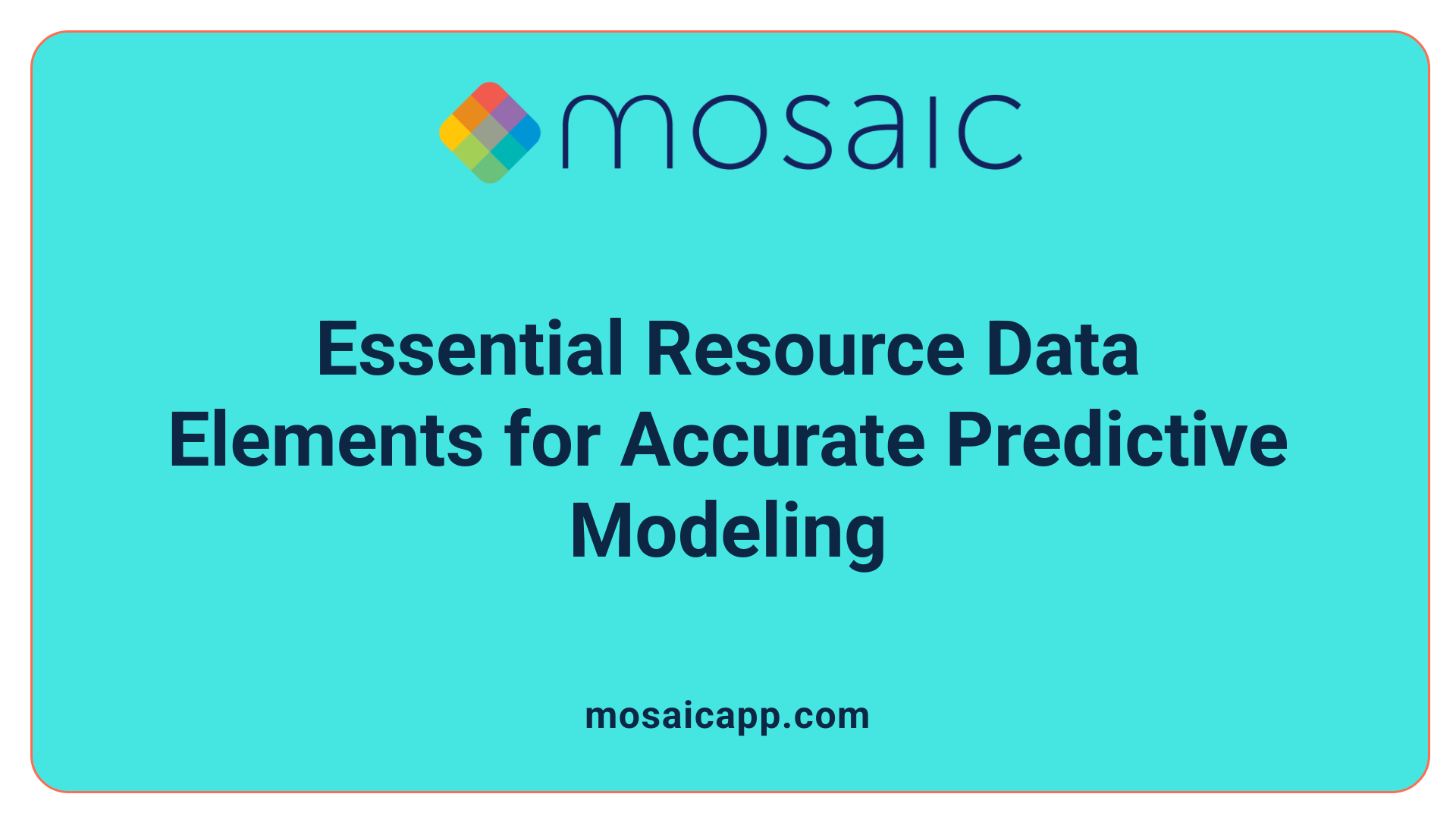
What types of resources are considered in predictive resource management?
Predictive resource management includes several categories of resources essential for successful project delivery. These encompass human resources (personnel and their skills), physical resources (equipment and materials), financial resources (budget allocations), and technological resources (software and hardware). All these resource types are defined early in the project through detailed scope and precise estimates.
Resource data collection and scope definition
Collecting comprehensive resource data begins with identifying all available resources and accurately defining the project's scope. This process includes breaking down the work structure, creating detailed resource lists, and clearly assigning roles and responsibilities. Gathering this information systematically ensures that predictive models have the necessary input to forecast resource demand throughout the project lifecycle.
Importance of comprehensive resource information
Having complete and accurate resource data is vital for predictive analytics to function effectively. It allows for precise forecasting, efficient resource allocation, and proactive identification of potential bottlenecks or shortages. Comprehensive resource information also supports continuous monitoring and adjustment, leading to optimized schedules and reduced waste.
| Resource Type | Description | Importance in Predictive Modeling |
|---|---|---|
| Human Resources | Skilled personnel required for tasks | Vital for workload distribution and capacity forecasting |
| Physical Resources | Equipment, materials, and tools | Helps predict availability and potential delays |
| Financial Resources | Budget and monetary assets | Ensures funding matches project needs and prevents overspending |
| Technological | Software, hardware, data analytics tools | Enables advanced forecasting and real-time project adjustments |
The Resource Management Lifecycle and Predictive Insights
What are the key stages in resource management?
Resource management in projects follows a structured lifecycle encompassing several stages:
- Planning – Defining resource requirements and creating a detailed scope.
- Estimation – Quantifying needed resources and duration.
- Acquisition – Procuring human, physical, financial, and technological resources.
- Assignment – Allocating resources based on roles and availability.
- Monitoring – Tracking actual versus planned use.
- Optimization – Adjusting allocations to avoid conflicts or underutilization.
- Closeout – Finalizing resource usage and documenting lessons learned.
Throughout these stages, a variety of tools assist project managers:
- Work Breakdown Structure (WBS) and Resource Breakdown Structure (RBS) support detailed planning and allocation.
- RACI matrices clarify roles and responsibilities.
- Gantt charts enable scheduling and progress visualization.
- Historical data, lessons learned, and industry benchmarks improve estimation accuracy.
- Project scheduling software and estimation spreadsheets facilitate ongoing monitoring.
How does predictive analytics integrate into each resource management phase?
Predictive analytics enhances each stage by analyzing historical and real-time data to inform better decisions:
- During planning and estimation, it forecasts resource demand and availability, reducing waste and scheduling conflicts.
- In acquisition and assignment, analytics recommend optimal resource allocation based on predicted workloads and skill match.
- Monitoring benefits from anomaly detection, identifying deviations early to apply corrective actions.
- Optimization is more dynamic through AI-driven real-time resource reallocation.
- Closeout insights help update predictive models with lessons learned, improving future project forecasts.
By embedding predictive tools such as machine learning models within project management systems, teams continuously adjust plans based on evolving data. This integration improves resource utilization, reduces risks, and supports proactive project delivery.
| Stage | Traditional Tools | Predictive Analytics Contribution |
|---|---|---|
| Planning | WBS, RBS, Historical Data | Forecast demand, identify potential constraints |
| Estimation | Benchmarks, Spreadsheets | Improved accuracy, trend identification |
| Acquisition | Scheduling software | Optimize procurement timing and resource selection |
| Assignment | RACI Matrix, Skill Matching | Match resources to predicted workload and capacity |
| Monitoring | Progress Reports, Gantt Charts | Real-time discrepancy alerts and anomaly detection |
| Optimization | Resource Reallocation Tools | Dynamic adjustment and scenario simulation |
| Closeout | Lessons Learned Documentation | Feed data into future predictive models |
How Predictive Analytics Forecasts Resource Demand and Usage
How can predictive models forecast resource demand?
Predictive models forecast resource demand by analyzing a range of data sources, including historical project data, lessons learned, and industry benchmarks. These models incorporate project-specific details to generate forecasts that cover the entire project lifecycle. This comprehensive analysis allows project managers to anticipate resource needs accurately and allocate them efficiently.
Forecasting resource requirements
Resource forecasting begins with detailed planning and estimation. Project managers identify the types of resources required — human, physical, financial, and technological — early in the project through scoping and estimation processes. Tools such as work breakdown structures (WBS), resource breakdown structures, and project scheduling software assist in creating precise allocation plans. This forward-looking approach helps in aligning resources with project demands to prevent underutilization or conflicts.
Using historical data and benchmarks
Historical data and industry benchmarks serve as critical reference points for predictions. By analyzing past use patterns and performance metrics, predictive analytics refine estimates for similar upcoming tasks. This method also leverages estimation spreadsheets and project management techniques like Critical Path Method (CPM) and Program Evaluation and Review Technique (PERT) to improve accuracy.
Minimizing waste through accurate forecasting
Accurate forecasting minimizes waste by reducing over-allocation and avoiding bottlenecks. Predictive analytics enhances this process by enabling real-time adjustments to resource assignments as project conditions evolve. Additionally, artificial intelligence and machine learning tools help identify anomalies and reallocate resources effectively, leading to improved utilization and cost savings.
By integrating these predictive capabilities into project management, teams can optimize resource usage, prevent delays, and maintain budget control throughout the project lifecycle.
Risk Management Elevated through Pattern Analysis and Anomaly Detection
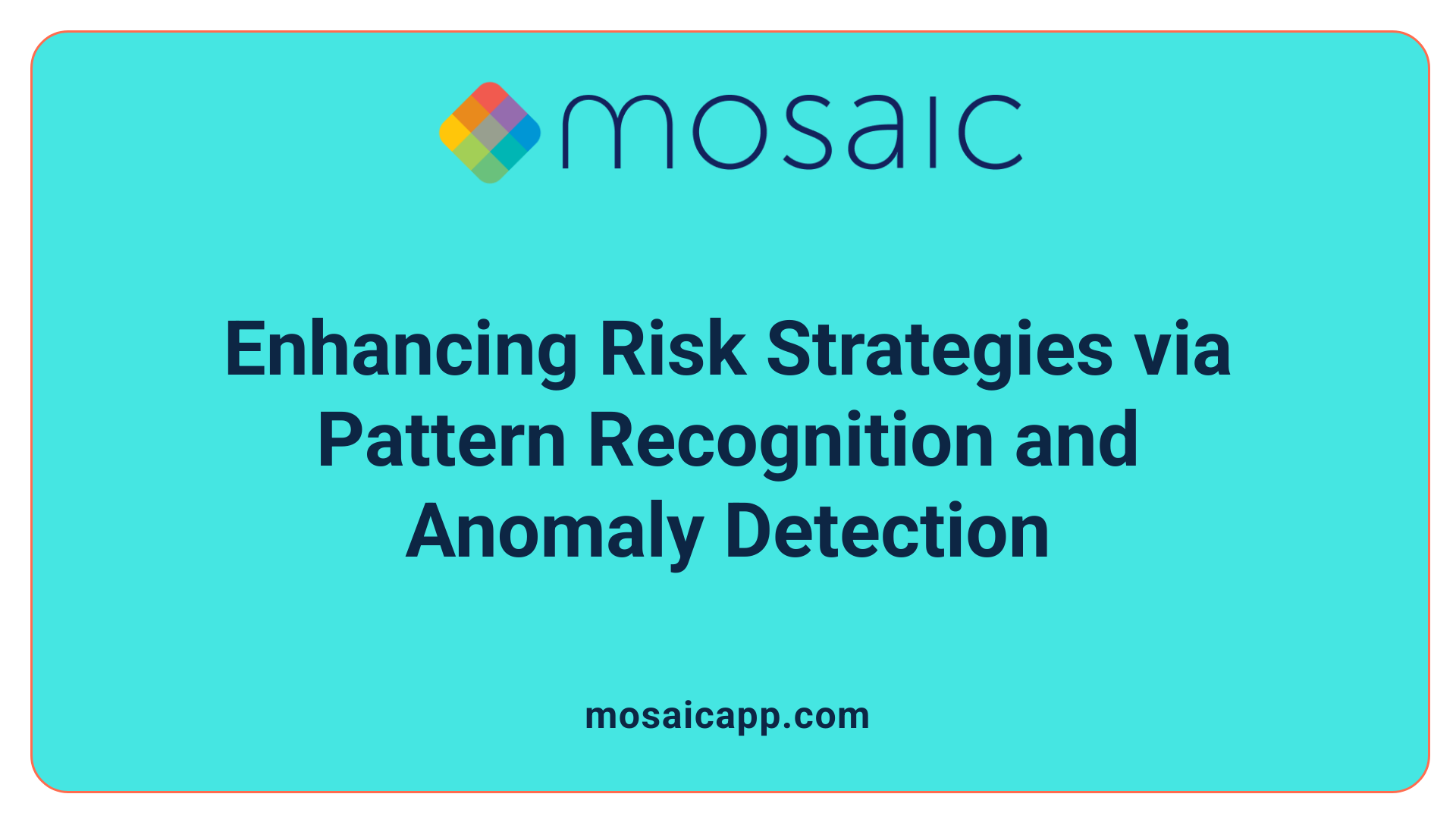
How does predictive analytics improve risk management?
Predictive analytics boosts risk management by leveraging data to foresee potential challenges before they occur. It employs analysis of historical and real-time data to spot patterns and unusual anomalies that might signal emerging risks.
Risk prediction methods
By using machine learning models and statistical techniques, predictive analytics evaluates large datasets to predict the likelihood and impact of risks throughout the project lifecycle. These methods enable project managers to anticipate issues such as resource shortages, scheduling conflicts, or budget overruns early enough to take action.
Role of pattern analysis and anomaly detection
Pattern analysis helps identify recurring issues or trends that may affect project success. Anomaly detection isolates unusual deviations from expected behaviors or performance metrics, signaling areas that require attention. Together, they provide a powerful lens to monitor risk factors dynamically rather than reactively.
Preventive and contingency measures
Armed with predictive insights, teams can implement preventive strategies like reallocating resources, adjusting timelines, or enhancing quality control to avoid risk realization. Furthermore, contingency plans are developed in advance, ensuring rapid responses if unforeseen events occur, thus reducing disruption and maintaining project momentum.
In summary, predictive analytics transforms risk management by offering foresight through sophisticated data examination methods, enabling proactive and agile responses to safeguard project objectives.
Technological Advances Empowering Predictive Project Management
What technologies support predictive project management?
Predictive project management relies heavily on cutting-edge technologies to analyze data, forecast project outcomes, and enhance decision-making. Core technologies include artificial intelligence (AI) and machine learning (ML), which process vast volumes of past and real-time data to identify patterns and predict potential risks or resource needs.
Data integration platforms and real-time analytics tools enable seamless collection and analysis of information across project systems. They make it possible to continuously monitor project progress and adjust plans dynamically based on the latest insights.
For example, AI-driven tools like Pecan AI employ advanced machine learning to examine extensive data sets, uncover trends, and provide accurate project forecasts. Similarly, predictive SaaS platforms such as TrueProject automate oversight with AI-powered warnings and insights, streamlining resource management and improving overall project health.
In summary, these technologies combine to facilitate proactive project management by supporting accurate forecasting, risk mitigation, and efficient resource allocation, thereby increasing the likelihood of project success.
Best Practices for Implementing Predictive Analytics in Resource Planning
What are the best practices for implementing predictive analytics in projects?
Implementing predictive analytics effectively requires a structured approach that starts with systematic data collection and analysis. Collecting high-quality, relevant data consistently over time forms the foundation for accurate models that can forecast trends and potential obstacles.
Next, the integration of predictive tools with existing project management systems is essential. Combining these analytics with familiar tools like Gantt charts, resource breakdown structures, and scheduling software enables seamless workflows and real-time adjustments based on current data insights.
A major component of success involves training and organizational support. Project managers and team members need to develop skills in data analysis and interpretation to confidently utilize predictive insights for decision-making. Supportive organizational culture and ongoing training can reduce resistance to change and improve data quality through more disciplined practices.
Following these best practices helps in overcoming common challenges such as data quality issues and resistance to new technology. Emphasizing clean, secure data management and offering hands-on training ensures teams can leverage predictive analytics to optimize resource planning, reduce waste, and keep projects on track effectively.
Challenges and Solutions in Adopting Predictive Resource Management
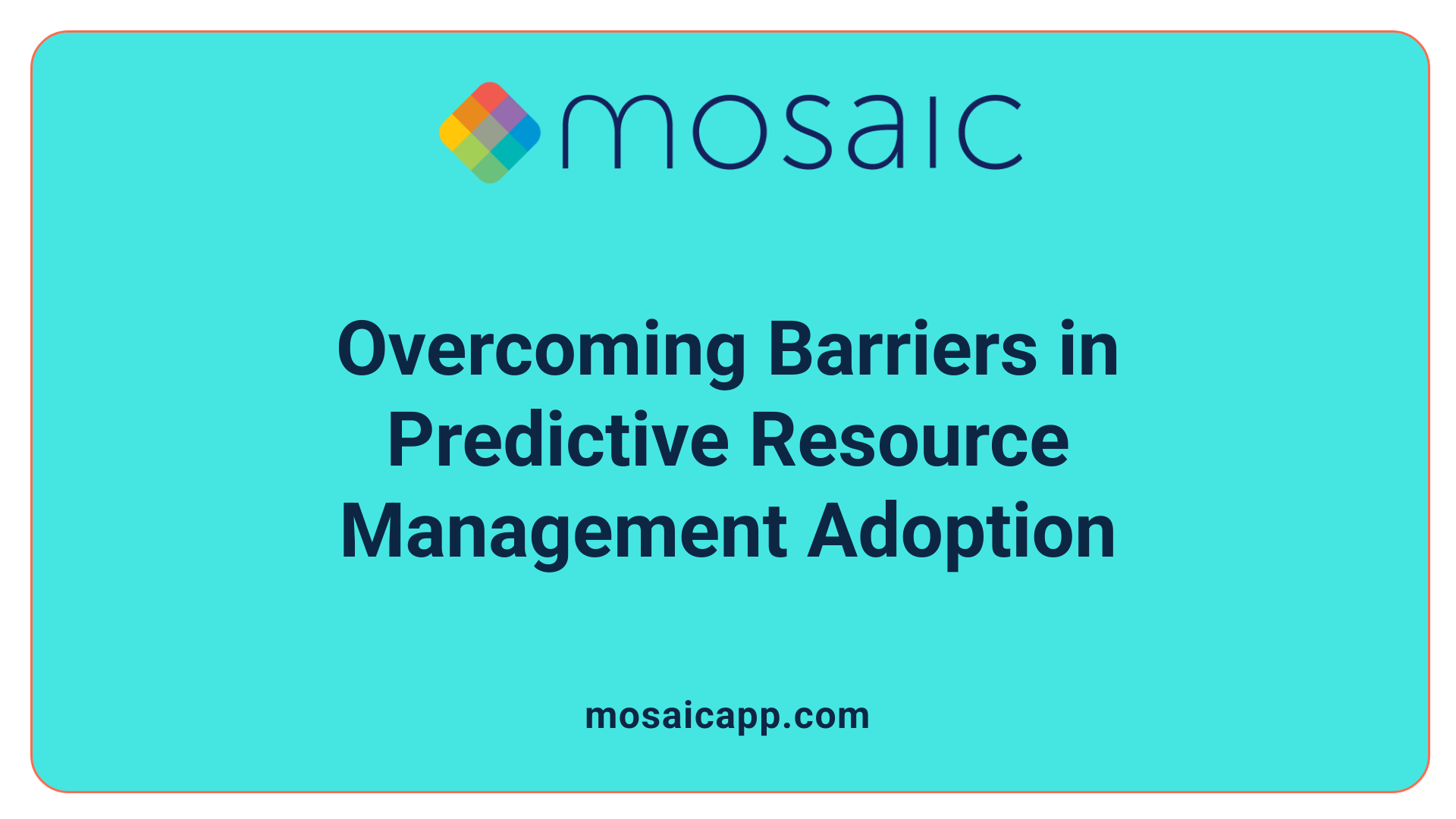
What challenges arise when adopting predictive resource management?
Adopting predictive resource management comes with several hurdles. Poor data quality is a primary concern, often caused by data entry errors and reliance on static, outdated spreadsheets. This can lead to inaccurate forecasts and misguided decision-making.
Another major challenge is the resistance to change within organizations. Teams accustomed to traditional methods may be reluctant to trust or adopt predictive analytics tools. Skill mismatches also occur when staff lack the expertise needed to interpret complex data outputs, impacting implementation effectiveness.
Shifting project priorities and inaccurate estimates further complicate predictive resource management, sometimes resulting in resource overloading or underutilization.
Strategies to overcome these challenges
To address data quality issues, systematic data cleansing is vital. This involves validating, correcting, and updating datasets to ensure accuracy and consistency. Ensuring data privacy and security builds organizational confidence in predictive systems.
Organizational training and robust support programs help ease resistance. Educating project managers and teams on data analysis, interpretation, and tool usage fosters skills development and a culture open to data-driven practices.
Integrating predictive models with existing project management systems allows smoother transitions. Continuous monitoring and feedback loops enable timely adjustments, helping teams adapt to shifting priorities without losing sight of project goals.
Together, these strategies promote successful adoption of predictive resource management, enhancing project planning, risk mitigation, and resource optimization.
Integrating Predictive Analytics with Traditional Resource Controls
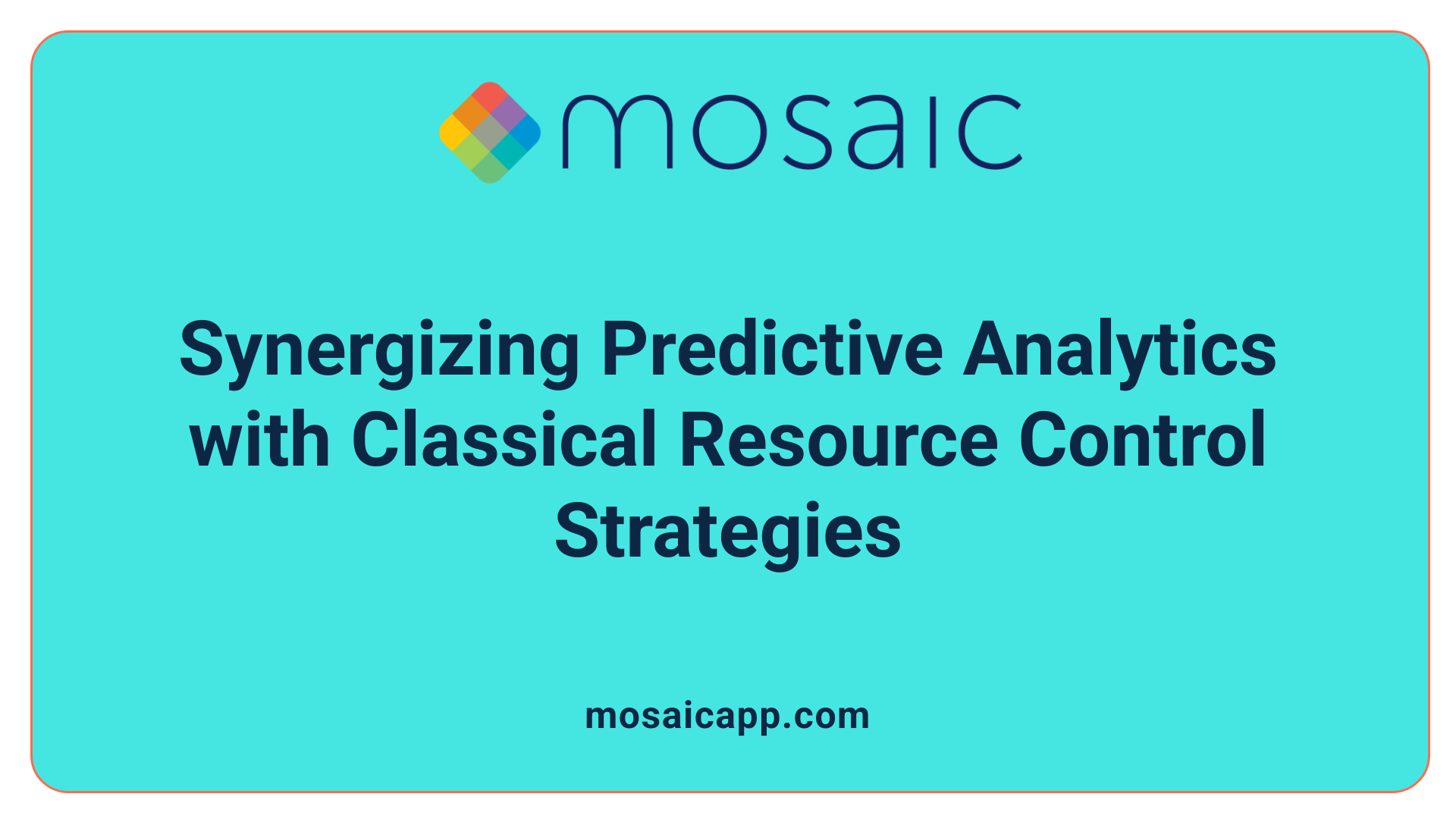
How do predictive models integrate with traditional resource management practices?
Predictive models enhance resource management by combining advanced forecasting techniques with established formal controls. This integration allows project managers to continuously monitor resource utilization and make real-time adjustments. For example, predictive analytics can identify emerging resource conflicts or underutilization before they escalate, enabling timely reallocations that keep the project on track.
Combining forecasting with formal controls
Traditional resource management relies on formal documentation, clear communication, and strict tracking of resource allocation versus actual usage. Predictive analytics complements these controls by forecasting future resource demands based on historical and real-time data. This foresight supports proactive planning and minimizes surprises.
Continuous monitoring and adjustment
By embedding predictive models into project systems, teams can benefit from ongoing data insights that inform continual resource optimization. Automated alerts and AI-driven recommendations help detect anomalies or potential risks early, allowing managers to adjust schedules or redistribute resources seamlessly.
Preventing conflicts and underutilization
Integrating predictive analytics bolsters efforts to prevent resource conflicts, overallocation, or underutilization. Through pattern recognition and scenario analysis, project teams can foresee and address bottlenecks or idle capacities. This leads to improved efficiency and reduces waste.
Together, predictive analytics and traditional resource management practices create a dynamic, data-driven approach that enhances project outcomes through better decision-making and resource optimization.
Emerging Trends Shaping Predictive Resource Management
What emerging trends are influencing predictive resource management?
Predictive resource management is evolving rapidly with new technologies and approaches transforming traditional methods. One significant trend is the integration of Internet of Things (IoT) devices. IoT enables continuous, real-time data collection from physical assets and environments, enhancing the accuracy of resource tracking and usage forecasts.
Alongside IoT, blockchain technology is increasingly applied to secure sensitive project data. Its decentralized ledger ensures transparency and immutability, which is crucial for maintaining data integrity in complex project ecosystems.
Another major driver is the advancement of artificial intelligence (AI). Modern AI algorithms improve predictive analytics by identifying complex patterns, offering superior risk prediction, and enabling dynamic resource re-allocation. These capabilities help project managers make timely, informed decisions.
Real-time collaboration tools are also becoming essential. They allow teams to share updates and insights instantly, enhancing coordination and responsiveness, which are vital for managing evolving project demands.
Finally, there is a stronger focus on sustainability within predictive resource management. Emerging systems incorporate environmental and social factors into planning and resource allocation, promoting responsible project delivery and long-term viability.
These trends collectively empower organizations to optimize resources, enhance project outcomes, and adapt proactively to changing conditions.
The Strategic Value of Predictive Resource Planning Across Industries
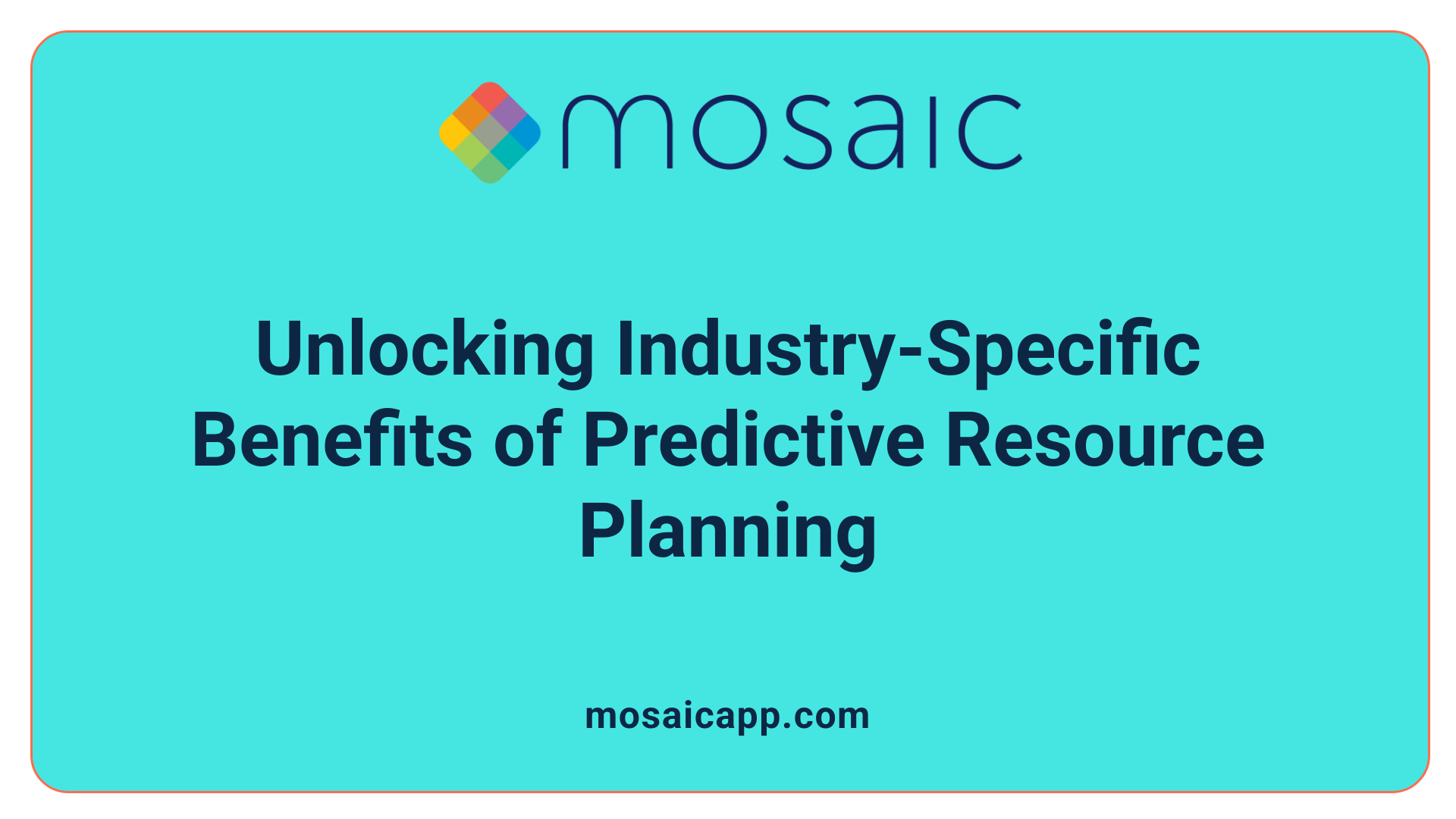
Which industries benefit the most from predictive project management?
Predictive project management is widely applicable across various sectors, notably construction, IT, healthcare, and manufacturing. These industries benefit significantly as predictive analytics helps anticipate challenges and allocate resources efficiently, ensuring projects stay on track and within budget.
Impact on project delivery and resource utilization
By leveraging predictive models, organizations in these fields can forecast resource demand throughout the project lifecycle, leading to precise resource allocation that minimizes waste. Tools like Pecan AI and TrueProject harness machine learning and AI to provide advanced warning systems and data-driven insights, which enable timely interventions and adjustments.
This proactive approach ensures better management of human, physical, financial, and technological resources. Continuous monitoring through integrated project management systems facilitates real-time reallocation, risk prediction, and improved utilization.
Enhancements to project health and performance
The integration of predictive analytics and AI enhances traditional project management practices by fostering higher accuracy in forecasting, optimizing schedules, and reducing risks. Automated oversight and real-time analytics foster improved communication and tracking, driving projects towards successful outcomes.
Overall, predictive resource planning empowers industries to optimize project delivery by aligning capacity and availability with project demands and by enabling early detection and mitigation of risks through data-driven decision-making.
Embracing Predictive Resource Modeling for Future-Ready Project Management
Predictive modeling powered by robust resource data redefines how projects are planned, executed, and controlled. By integrating advanced analytics and AI-driven insights, project teams gain the foresight needed to allocate resources effectively, anticipate risks, and adjust dynamically as conditions change. As technologies evolve and organizations adopt best practices, predictive resource management will become essential for delivering projects on time, within budget, and aligned with strategic goals. Embracing this approach is not just an advantage but a necessity for future-ready project management.


